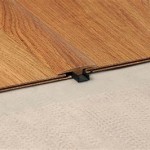Can You Lay Ceramic Tile Over Painted Concrete?
The prospect of laying ceramic tile over painted concrete is a tempting one, especially for those seeking a budget-friendly way to upgrade their floors. However, the feasibility of this project hinges on the type of paint used and the condition of the concrete surface. While it may seem like a straightforward task, certain factors can make the project more complex and less successful. This article explores the practicality of laying ceramic tile over painted concrete, highlighting key considerations and offering insights to guide your decision-making process.
The Challenge of Adhesion
The primary concern when laying ceramic tile over painted concrete is the adhesion of the tile mortar to the painted surface. Paint acts as a barrier, preventing the mortar from forming a strong bond with the concrete substrate. This lack of adhesion can lead to tile lifting, cracking, and even complete failure. The success of the project largely depends on the type of paint used, its age, and the condition of the concrete beneath.
Types of Paint and Their Impact
Not all paints are created equal in terms of their suitability for tile installation. Here's a breakdown of common paint types and their implications:
Acrylic Paint
Acrylic paints are generally water-based and known for their durability. While they offer good adhesion to concrete, they can still pose challenges for tile installation. The smooth, non-porous surface can hinder the mortar's ability to grip effectively. However, if the acrylic paint layer is thin, properly prepared, and sufficiently aged, it might be possible to lay tile over it.
Epoxy Paint
Epoxy paint is a highly durable and moisture-resistant coating often used for garage floors. It forms a hard, non-porous surface that makes adhesion extremely difficult. Laying tile over epoxy paint is generally not recommended due to the high risk of tile failure.
Oil-Based Paint
Oil-based paints are known for their long-lasting protection and resistance to moisture. However, they can create a very slick surface that prevents the mortar from bonding properly. Additionally, the curing process for oil-based paints can be lengthy, making it crucial to ensure the paint is completely dry before attempting tile installation.
Factors to Consider Before Laying Tile
Even if the paint used is deemed potentially suitable, several factors must be considered before proceeding with tile installation.
Age of the Paint
The age of the paint plays a crucial role in its suitability for tile installation. Newly painted surfaces may not have fully cured, making them susceptible to delamination. It's generally advisable to wait at least 30 days after painting before laying tile, allowing the paint to harden completely.
Condition of the Concrete
The condition of the underlying concrete is equally important. If the concrete is cracked, uneven, or has loose particles, the painted surface will inherit these imperfections. This can compromise the tile's stability and create a less appealing finished floor. Ensure the concrete is sound, smooth, and free from debris before proceeding.
Preparation is Key
Proper preparation is essential for success. Before laying tile, the painted surface must be thoroughly roughed up to create a textured surface that will allow the mortar to bond effectively. This can be achieved using methods like sanding, scoring, or etching. Be sure to remove all dust and debris after preparing the surface.
Alternatives to Laying Tile Over Painted Concrete
If laying tile over painted concrete appears risky or unfeasible, consider these alternative approaches:
Remove the Existing Paint
The most reliable way to ensure good adhesion is to remove the existing paint entirely. This can be a labor-intensive process, especially if dealing with multiple paint layers. However, it guarantees a solid foundation for tile installation.
Apply a Bonding Primer
Using a bonding primer specifically designed for tile installation can enhance the adhesive properties of the painted surface. These primers are formulated to create a rough texture and improve the mortar's grip. However, it's crucial to select a primer compatible with the existing paint and follow the manufacturer's instructions carefully.
Install Tile Over a Waterproof Membrane
Another option involves installing a waterproof membrane over the painted concrete surface. This membrane provides a barrier against moisture and creates a smooth, consistent surface for tile installation. However, this method can add complexity and cost to the project.
Ultimately, the decision to lay ceramic tile over painted concrete requires careful assessment. Understanding the limitations, considering the factors involved, and evaluating alternative solutions will enable you to make an informed decision that aligns with your project's requirements and expectations.

Tile Over Painted Concrete No Styles
:max_bytes(150000):strip_icc()/can-you-install-tile-directly-on-concrete-1822600-04-458f7bb6c78348c1835cf8054ef36553.jpg?strip=all)
How To Install Tile Over Concrete
How To Tile Onto Concrete Floors Porcelain Super

Can You Install Ceramic Tile On Top Of Vinyl Flooring 2024 Today S Homeowner
:max_bytes(150000):strip_icc()/can-you-install-tile-directly-on-concrete-1822600-01-8a89ceab1a274fb8ac81890ab7fc6b1b.jpg?strip=all)
How To Install Tile Over Concrete

How To Create Faux Tile Look On Concrete Patio Southern Hospitality

Tiling Over Tiles Is It A Good Idea How You Can Do Right

Deciding Between Painting Or Tiling A Concrete Floor Young House Love

My Mudroom Floors 80 Makeover How To Paint Your Ugly Concrete Postbox Designs

How To Lay Ceramic Tile Over Concrete Ron Hazelton
Related Posts








